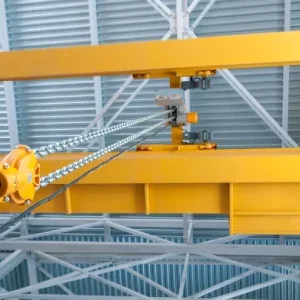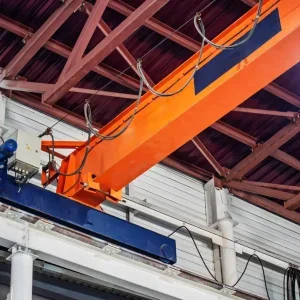The STS cranes, originally provided by ZPMC, will each have their height increased by 5.8m. This will provide APM Terminals considerable extra capacity to handle the new Triple-E vessels arriving at the port, the company stated. The modifications will be undertaken by Kalmar’s specialist crane services team located in Algeciras, Spain, who have developed systems to handle this technical procedure.
The specialist technique involves the Kalmar team using a jacking system which lifts the crane by the required height. A heightening construction is then inserted below the gross girders. In order to maintain the integrity and rigidity of the structure the sill beam is strengthened through bracers which are installed in the waterside portal frame.
Eduardo Prat, VP, Kalmar South EMEA said: "Like many ports, Port of Algeciras is seeing a significant increase in the size of ships and this means they need to find innovative solutions to increase their port side handling capacity. Increasing the STS crane height provides an expedient and cost-effective answer to boosting the crane capacity.
Kalmar’s expertise is unequalled in this type of procedure. These huge structures require precision handling and engineering safety is naturally of paramount importance. We have been working closely with APM Terminals for many years and I’m happy that we can support the leading terminal operator in Spain with our expertise across a wide range of brands and types of crane, not just Kalmar equipment."
The manufacturer has introduced what the company is saying is the world’s first real hybrid straddle and shuttle carriers, consuming up to 40 per cent less fuel than existing machinery.
The new Kalmar hybrid models meet the tightest engine emission regulations, Kalmar announced earlier this month, reducing the Co2 emissions by over 50t per year compared to a traditional diesel-electric machine.
Besides advanced hybrid technology, Kalmar presents upgrades and new features over its offering of straddle and shuttle carriers in response to customer needs, the company stated.
"In designing our next generation machines, we have been guided by the port and terminal industry’s requirement for low total cost of ownership, environmental sustainability, excellent usability and ergonomics, safety, productivity and automation," said Dr Tero Kokko, Kalmar’s VP, Horizontal Transportation.
"We think that the new Kalmar hybrid straddle and shuttle carriers are a true leap forward in terminal yard equipment, and are confident that they will offer significant customer benefits throughout the equipment life time."






